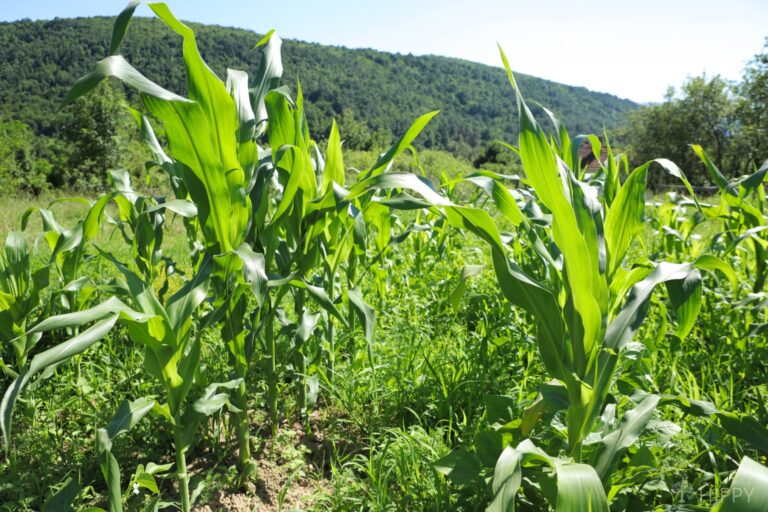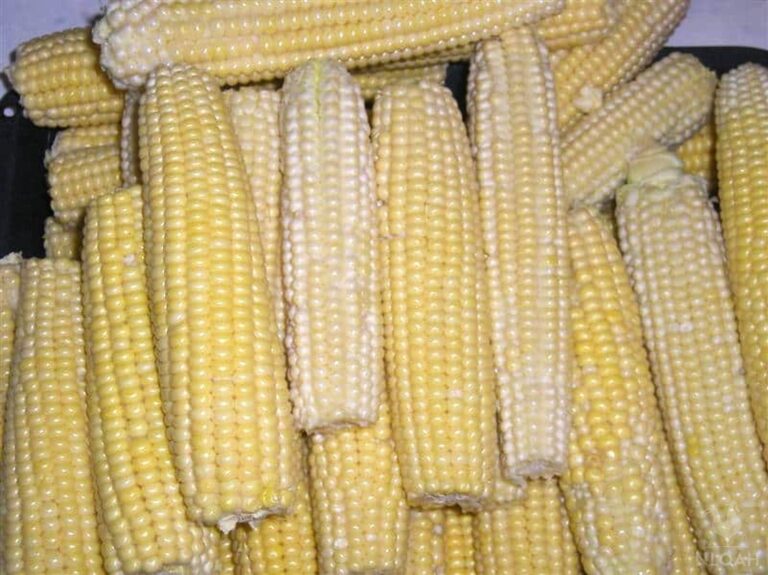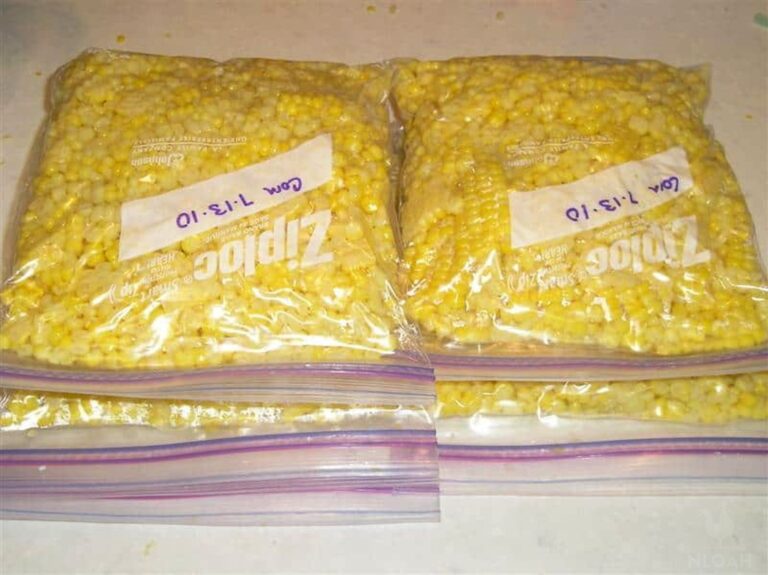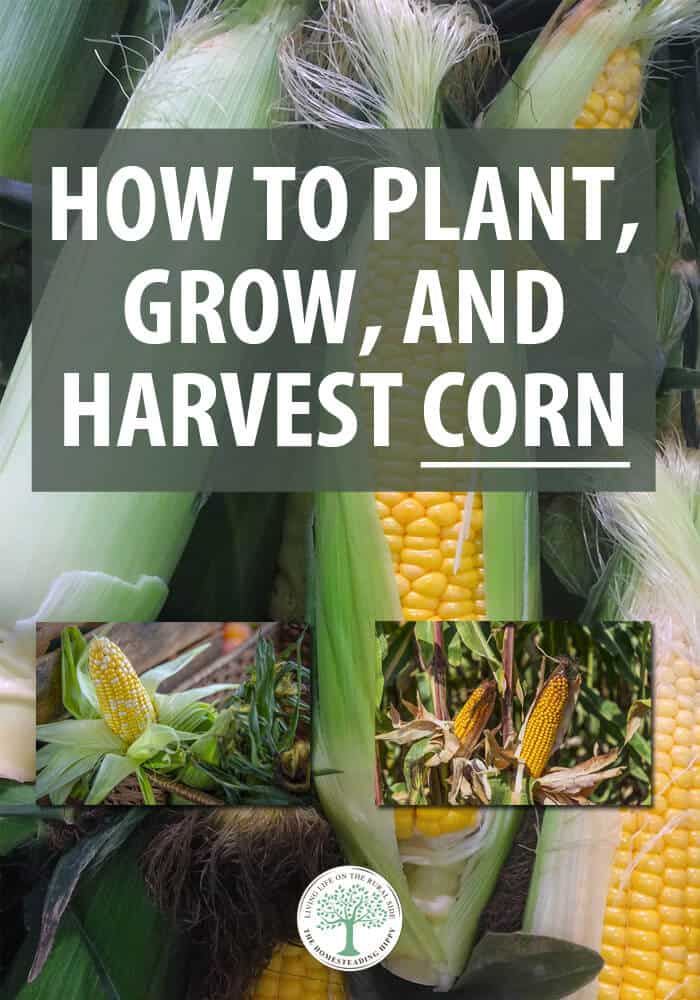Corn is the quintessential American plant. Cultivated in North America for thousands of years, this plant is a favorite of gardeners all around the world. Fresh, golden corn is easy to grow in a backyard garden, allowing you to cook dozens of ears at a fraction of the price you would pay at the supermarket.
Even better, it’s low maintenance, making it the perfect plant for you to grow this summer, no matter how little gardening experience you might have.

Technically a grain, corn is commonly considered a vegetable, largely because it is so high in various vitamins, minerals, fiber, and antioxidants.
Corn is commonly grown around the world, and offers numerous health benefits. Although corn is high in sugar, it is a food that should be included in any healthy diet.
Corn is rich in vitamin B12, folic acid, iron, and more. While it tends to be higher in carbohydrates than any other macronutrient, it does also contain protein and minimal quantities of fat. It can even help lower your blood sugar and cholesterol levels, as it is high in Vitamins B5, B1, and C.
Table of Contents
The Many Faces of Corn: Ornamental, Sweet, and Field Corn
When you’re poring over your seed catalog, you may be taken aback by the hundreds of different types of corn varieties available to gardeners.
Sweet corn is the most common type of corn grown by conventional backyard gardeners, but certainly not the only kind. Ornamental and field corn are also popular depending on your needs.
Sweet corn is the most popular kind of corn grown in the garden, and it is what is traditionally used for classic corn on the cob.
This type of corn preserves well, making it a favorite for canned, frozen, or creamed corn recipes, and is picked before the kernels have a chance to dry out.
Sweet corn is technically harvested during the immature stage, meaning the kernels are nice and tender, comprised of soft starches that will not pop when exposed to heat.
Ornamental corn, also known as Indian corn and flint corn, has a hard outer shell. It usually appears in a myriad of colors, making it an attractive option for sprucing up your home in the autumn months. It is primarily used for decoration and is not usually edible.
However, some types of flint corn are also prized as popping corns. These varieties tend to have a hard exterior shell with a soft, starchy center.
The moisture inside the starchy center of the corn produces steam and builds up pressure, producing popcorn when exposed to heat.
The final type of corn, field corn, is also commonly referred to as dent corn. It is the most widely grown type of corn in the United States, but not for human consumption.
This type of corn is grown for livestock feed, as well as some food products that require processed-down corn. Containing a mixture of hard and soft starches, the kernels become indented when they are dried.
While these three major types of corn vary widely in their culinary purposes, they are all grown in a relatively similar fashion, with the exception to this being in how they are harvested.
That being said, you do need to pay particular attention the variety of seed you purchase, as you don’t want to find yourself with four dozen ornamental corn plants on your hands when you expected to be enjoying some tasty corn on the cob.
Varieties of Corn
When it comes to sweet corn, keep in mind that the kernels of most sweet corn varieties will start to change to starch immediately after you have picked the ears.
This is why you want to eat them as soon as they are harvested, or within as little time as possible. That being said, there are newer, hybridized species of sweet corn that hold onto their sugar content for much longer.
When you are looking for the best variety of corn to pick, consider this new feature and select a variety that is listed as supersweet.
While these varieties will have a tastier, fresher flavor, they may not hold up as well to hot or dry conditions. Pick a standard variety of corn for an old-fashioned flavor, or consider more synergistic varieties for an updated take on the dinnertime classic.
While there are dozens of types of sweet corn you can choose from, there are several standouts in regards to popularity and ease of growing.
Among the most commonly grown species are Peaches and Cream, Sugar Buns, Incredible, Miracle, Honey and Pearl, Supersweet Jubilee, and Silver Queen.
Categories of sweet corn can be broken down into whether they are standard, sugar enhanced, or super sweet.
Standard sweet corn has lower sugar content but can germinate easily in colder soil, and includes varieties like Jubilee and Silver Queen.
Sugar-enhanced sweet corn includes types like Incredible, Sugar Buns, Peaches and Cream, and Miracle. These types of corn have higher sugar content and store well after they have been harvested.
The final type of corn, super sweet corn, includes types like Honey and Pearl, Phenomenal, and How Sweet It Is. These corns germinate poorly in cold soils, making them inopportune for gardeners who want to get a headstart on the growing season.
If you are growing a blend of standard, sugar-enhanced, and super sweet corn, you will need to isolate them to ensure you don’t have problems with cross-pollination.
That said, if you have plenty of space in the garden, why not try out a mixture of varieties? Plant some hybrid species for a super sweet snack, or add some ornamental or popping corn in, both of which are shockingly easy to care for.
When purchasing your seeds, account for roughly twelve plants per person in your household. Count on more if you want to preserve a large batch of corn by freezing, drying, or canning it.
If you want an extended harvest, consider sowing fresh seeds every two or six weeks. You can plant early-season, mid-season, and late-season types all at the same time as well for the same effect, too.
How to Plant Corn
Corn is one of the few plants that does not transplant well, and as a result should be grown directly from seed.
If you garden in a colder climate with a short growing season, consider using biodegradable pots. This will allow you to transplant the entire pot into the ground, rather than having to disturb the roots as you take the plant out of the soil.
Ideally, you should wait to plant (or transplant, if necessary) until the absolutely last minute. Make sure all danger of a frost is past, and allow the soil to warm up to at least 60 degrees Fahrenheit. This the ideal temperature for seed germination.
If the temperature is staying cold and you don’t have any more time to spare, consider laying black plastic on the areas where you intend to plant.
You can remove it before you lay your seeds down, or you can plant directly into the plastic itself after letting it warm the soil for a few days.
When you’re ready to plant, sow seeds about an inch deep. If you’re planting in particularly hot weather, plant them up to two inches deep.
You can plant seeds close together (roughly seven or eight inches apart), because corn has a relatively low germination rate. This will help prevent large, bare gaps in your corn patch.
Seeds germinate in roughly seven to ten days. If you have more than one plant arise in close proximity, you can thin your plants. Ideally, they should be spaced to one every fifteen inches for best results.
To thin your plants, cut unwanted seedlings off at soil level instead of ripping them up out of the ground by their roots, as this can cause damage to the surrounding plants.
How to Grow Corn
Corn needs roughly an inch of water per week, but this requirement increases during hot, dry weather as well as during the period when the stalks are beginning to form tassels.
If your corn is water stressed, you will end up with multiple ears with few kernels. To make sure you are watering your corn adequate, use a soaker hose or a drip irrigation system.
If you’re watering by hand, try not to spray them from above, as this can remove pollen and halt the process altogether.
Weeding is also very important in the early stages of corn development. Kill all weeds around the stalks during the first month of growth. After that, the roots will spread out about a foot from the stalk, so you need to be more careful in your weed removal techniques.
Your best bet is to apply a thick layer of mulch (like wood chips or straw) around the base of the plants to prevent new weeds from sprouting. This will also help the ground stay moist and allow the soil to retain all of the nutrients your corn needs to thrive.
Corn is very susceptible to frost, so if a cold snap is on the way, make sure you cover your plants to prevent any damage. You can use row covers or a similar contraption to ensure your plants aren’t damaged by poor weather.
Corn doesn’t need much in the way of extra fertilizer, but it’s not a bad idea to apply blood meal or another kind of fertilizer (think compost or a diluted fish-based blend) to help feed the soil.
This can help to replace lost nutrients and is especially beneficial when the corn stalks are about knee-high.
Some people believe that pruning corn plants will help enhance production of ears and sweet kernels. This is false, however, as removing side shoots can damage roots. They don’t harm production, and often removing them does more harm than good.
Unfortunately, corn is one of those vegetables that is extremely susceptible to pests. Cutworms are one of the most common insects to affect the growth of your corn, and they usually attack young corn seedlings.
Flea beetles are also common, and may cause extensive damage to the leaves of your young plants.
When your corn plants have matured, you may find that you have a problem with corn earworms. To help prevent them, try not to plant your corn near tomatoes, which corn earworms are naturally drawn to.
These pests feed on the tips of developing ears, and can cause extensive damage. Once the pests have begun to affect your plants, you can use an eyedropper to apply Bacillus thuringiensis, water, dishwashing liquid, and vegetable oil. This will help eliminate the pests without harming your plants.
Other common pests to affect corn plants include cucumber beetle larvae, European corn borers, and seed corn maggots. Keep in mind that insect pests aren’t the only types of creatures that can harm your plants – mammalian pests can also wreak havoc on your crop.
Raccoons, birds, and squirrels may all choose to nibble on your hard-earned harvest. They can often only be prevented by installing fencing or netting to keep them out of the garden altogether.
In terms of diseases, corn is relatively resilient. This is particularly true of hybrid varieties. Rotating your crops and engaging in clean garden practices can also help guard your plants against disease.
If you find plants that are infected with some kind of disease, like Stewart’s wilt, a common bacterial disease, your best bet is to destroy the affected plants to keep it from spreading.
Pollinating Corn
Corn is unique in that it can be a bit more challenging to pollinate. In order for your plants to produce kernels, the wind must move pollen from the tassels onto the silks that encase the ears.
While this is typically a process that can be carried out on its own, you may need to transfer pollen on your own.
Keep in mind that corn is susceptible to cross-pollination. You should keep different corn cultivars, particularly those that are hybrid or supersweet varieties, at least 400 or so yards apart.
If you don’t do this, you can also plant them in succession, which will mean that they produce tassels at different times. This will prevent genetics from one type of plant from being spread to another.
Promote adequate pollination by planting in blocks instead of rows. Blocks should contain three rows. If you don’t have the space or garden capacity to do this, you will likely need to hand-pollinate.
How to Harvest
You’ll know your corn is just about ready for harvest when silks appear on the ears. After three weeks, the ears should be ready.
You should begin checking them for ripeness as soon as the silks appear. To do this, simply pull back a small portion of the husk and stab a kernel with your nail. If liquid comes out, the eras are ready to go.

While all of your ears will likely not be ready for harvest at the same time, those growing on the same plant will always ripen all at once. If you notice that any of your silks are completely dried out or a yellow or green color, they may be past their prime.
The only exception to this is in ornamental or popping corn. If you are growing these varieties, you will want to leave them on the stalks to dry until the first frost. This will allow them to harden and be preserved for an extended period of time.
Preserving Corn
Preserving corn allows you to enjoy the flavors of summer all the way into late winter. There are several ways you can preserve corn, but keep in mind that it can last for several weeks if refrigerated and not preserved in any other way.
There are several other good ways to hang on to the delicious flavors of corn. Whatever you choose to do, you should always clean and blanch your corn before beginning the preservation process.
Blanching helps your vegetables stay fresher for longer, and can be done by placing your corn in boiling water for about seven to eight minutes. Cool the ears in ice water and allow them to dry before cutting off kernels or continuing with your preservation.
Canning corn is a great option for slightly immature corn, as it tends to brown during canning. You don’t need to blanch for this method of preservation, as you will be using a pressure canner which will cook the corn as it cans it.
You can fit about four and a half pounds of corn per quart, but make sure you only select ears with fully mature kernels. If so desired, you can also pickle corn, which will allow you to can it using a simpler, easier-to-use water bath canner.
Many people also freeze corn. You can freeze any variety of mature corn, just remember to blanch it first. When stored in freezer-safe packaging, you can store frozen corn (ideally, cut off the cob) for up to a year before it begins to lose its freshness.

Once you’ve grown, harvested, and preserved it, there are so many ways to consume corn. Eat it fresh off the cob, or use it atop a salad. Creamed corn, corn fritters, and corn casserole, as well as dozens of soups and salsas are also fantastic uses for corn.
No matter how you choose to eat it, corn is a fantastic crop that should be included in every gardener’s plot – no matter how big or small it may be.


Rebekah is a full-time homesteader. On her 22 acres, she raises chickens, sheep, and bees, not to mention she grows a wide variety of veggies. She has a huge greenhouse and does lots of DIY projects with her husband in her ever-growing homesteading endeavor. Learn more about Rebekah here.
